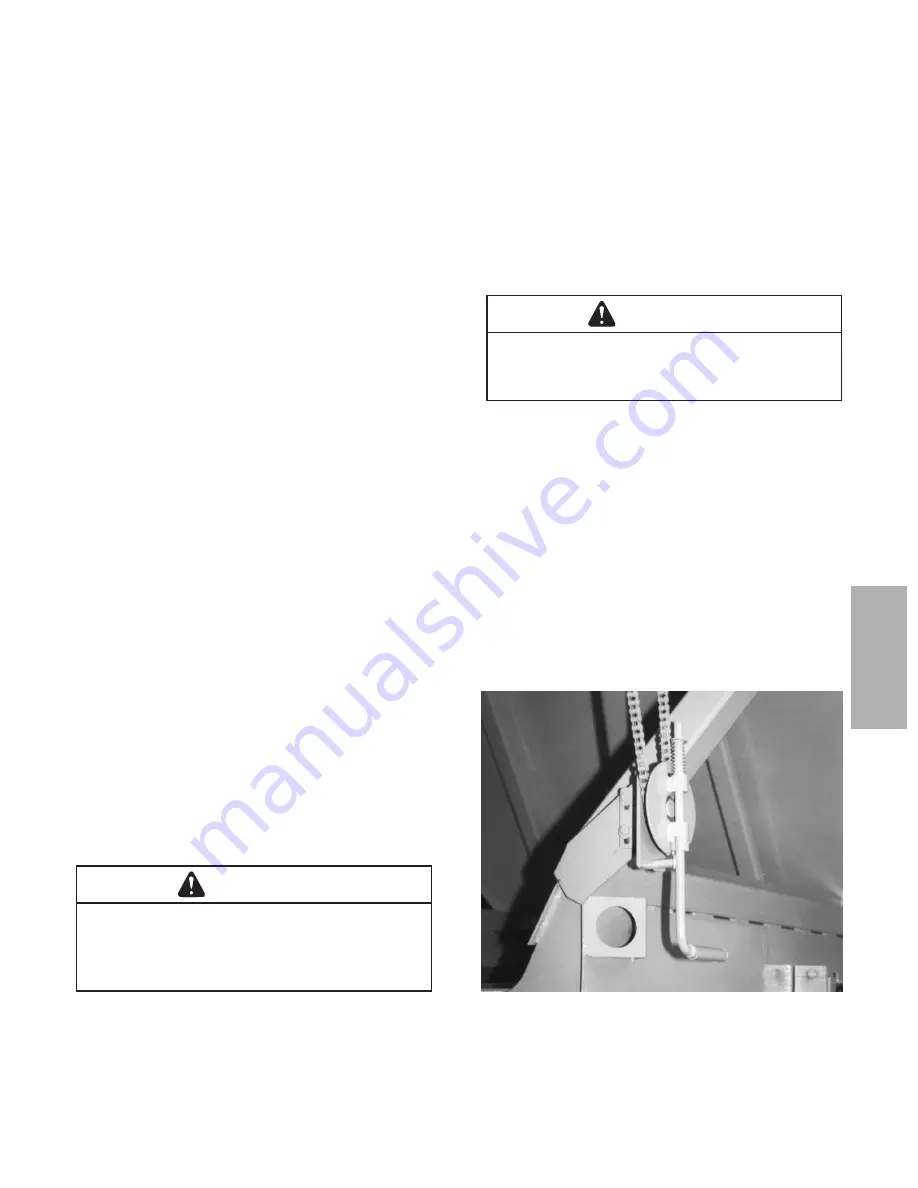
11
OPERA
TION
7. Check the lights, turn signals and reflectors for
operation.
8. Before operating the trailer, test the airbrake sys-
tem using the following procedure:
a. Check the air system pressure. The system must
hold 100 psi (7 Bar) minimum.
b. Apply the brakes. Inspect the brake action on all
the wheels for proper application.
c. Release the brakes. The brakes must release
promptly. The air pressure must discharge quickly from
the relay emergency valve.
d. Disconnect the emergency line to the trailer. The
trailer brakes must automatically apply.
e. Connect the emergency line to the trailer. The
trailer brakes must release.
9. Check the tires for proper inflation pressure. In
-
spect the tires for cuts or other damage.
10. Hook up the hydraulic lines and engage the
pump.
11. Check that the belt is turning freely.
Unloading Without Flow Control Valve
Use the following procedure to discharge material if
a flow control is not used.
1. Put the transmission in neutral and disengage the
clutch.
2. With the tractor engine at idle, engage the PTO
drive.
3. Slowly engage the clutch
4. Increase the tractor engine rpm to the desired rate
of discharge.
IMPORTANT:
Always idle the tractor engine
before engaging the PTO drive.
After the load is discharged, make at least two revo-
lutions of the conveyor to dislodge any excess material
left on the belting.
WARNING
Always disengage the PTO drive and shut
down the engine before entering the trailer
hopper or performing any cleaning or service of
any kind.
The use of fuels or oils on the sidewalls of the trailer
hopper when hauling hot mixes should be held to a
minimum. Normally, one coat of fuel or oil once a day
is recommended at the end of each days hauling.
NOTE:
Always check with your local and state
regulatory agency regarding the use of and/or disposal
of fuel or oil as a wash down or sidewall lubricant for
hot mix. The use of biodegradable oils for this purpose
is strongly urged to protect the environment.
Trailer Loading General Information
It is generally recommended to scale the trailer to
get the correct load distribution because of various
fifth wheel settings and different types of payload
material.
WARNING
Do not load the trailer beyond its rated
capacity. Overloading can affect stability and
reliability of the trailer.
IMPORTANT:
Heat and oil resistant type conveyor
belting must not be used when the ambient temperature
reach 20ºF or below. Use of this type of belting below
20ºF will void the warranty.
Operating the Manual Tarp (optional)
To cover the trailer hopper:
1. Release the crank handle from its storage posi-
tion.
2. Turn the crank clockwise until the hopper is com-
pletely covered.
3. Return the crank to its storage position.













































